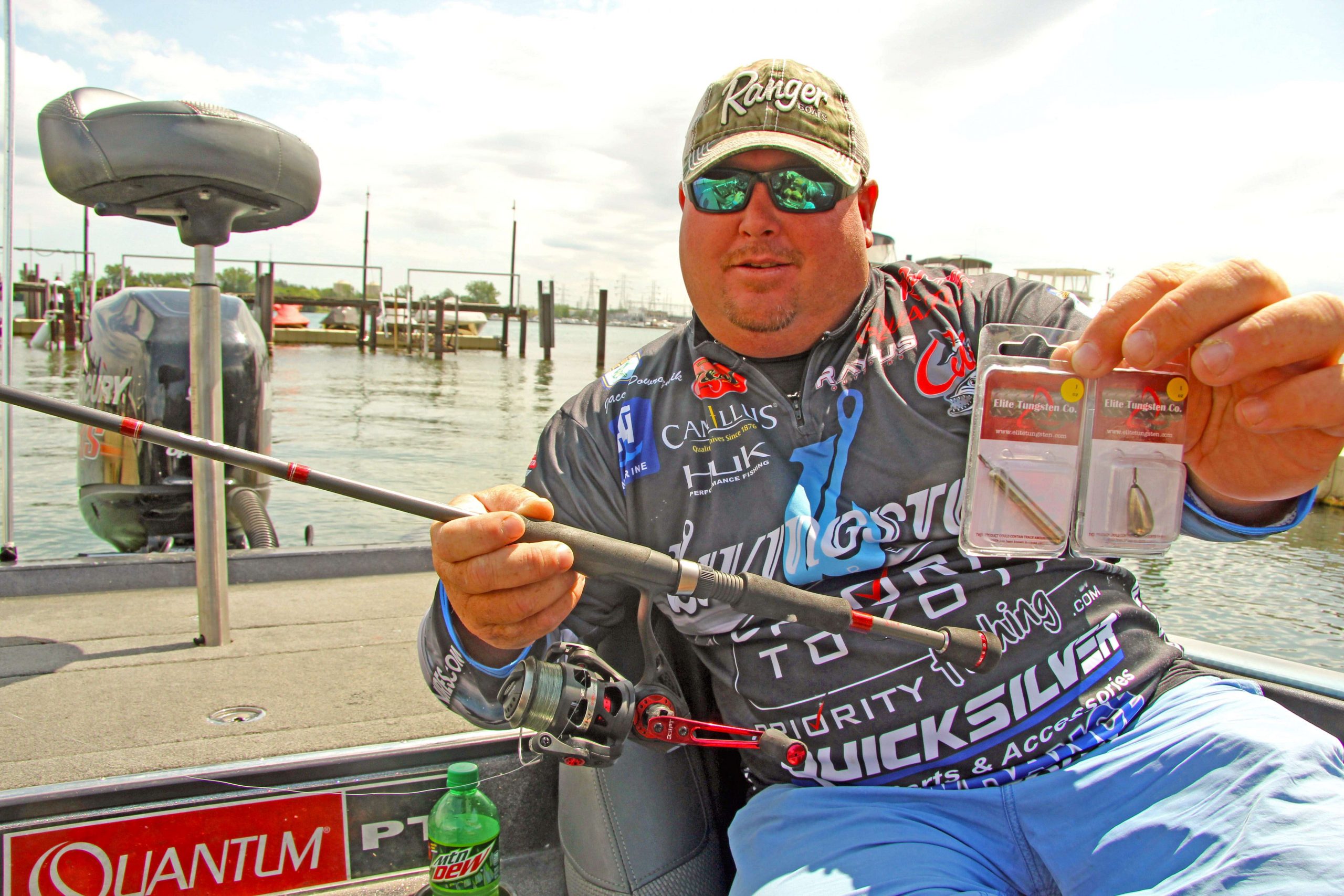
During the unique 8-man Bassmaster Classic Bracket tournament on New York’s Niagara River, Jacob Powroznik showcased the importance of going big with your drop shot weights when conditions call for it – like when hunkered down behind a bridge pier in 25-feet of water with the current raging past, not far from plunging over Niagara Falls.
“I realize that normally we think of small 1/8 and 3/16 ounce weights for drop shotting – it’s a finesse technique – but this river current is so extreme that I had to go big with my weight in order to keep the lure near the bottom,” he explains.
“I was actually using a ½ ounce weight,” confessed Powroznik. “And heck, that’s no big deal really, Elite Tungsten just came out with a 1-ounce drop shot weight.”
“Whatever the conditions, the bottom line is, if you’re not keeping your bait near the bottom, you’re probably not going to get a bite when drop-shotting,” emphasizes Powroznik.
Highly accomplished New York B.A.S.S. Nation angler Brad Brodnicki is quick to support Powroznik’s claims that sometimes super-sizing a drop shot weight is simply a necessity.
“When you’re on Lake Erie riding 4 or 5 foot waves over 30-feet of water, and those Smallies are near the bottom eating gobies, the only way to keep a bait in their face and maintain contact with your lure is with a ¾ or 1-ounce drop shot weight,” says the highly likeable school teacher and successful big water bass angler.
What about “Power Shotting?”
“You wanna talk about big drop shot weights? – Heck, they use a big ½ or ¾ ounce weight and 20-pound line on a drop shot rig with baitcasting equipment all the time to pitch around tulles and other heavy cover in the California Delta,” says Powroznik. “They call it ‘Power Shotting’ – and trust me, it works.”
“That’s the cool thing about bass fishing – just when we think we’ve got a standard way of doing things – somebody adds a little innovation or experimentation and proves there’s a better or different way, and using a big weight instead of a tiny weight on a drop shot rig is a great example of that.”
Powroznik’s Typical Drop Shot Rod, Reel, and Line: “Day in and day out, I use a 6’ 10” medium light spinning rod, with a 6-pound Hi Seas fluorocarbon leader tied to 10-pound Hi Seas braid on a super fast Quantum Speed Freak reel,” says Poworzonik.
“I love that reel because it picks up 33” of line with every turn of the handle, and when you’re dealing with crazy smallmouth, you better pick up all the line you can in a hurry when you hook one in deep water.”

